With Dusty Pink Walls and Artifacts Galore, This Mexico City Home Is a Complete Dream
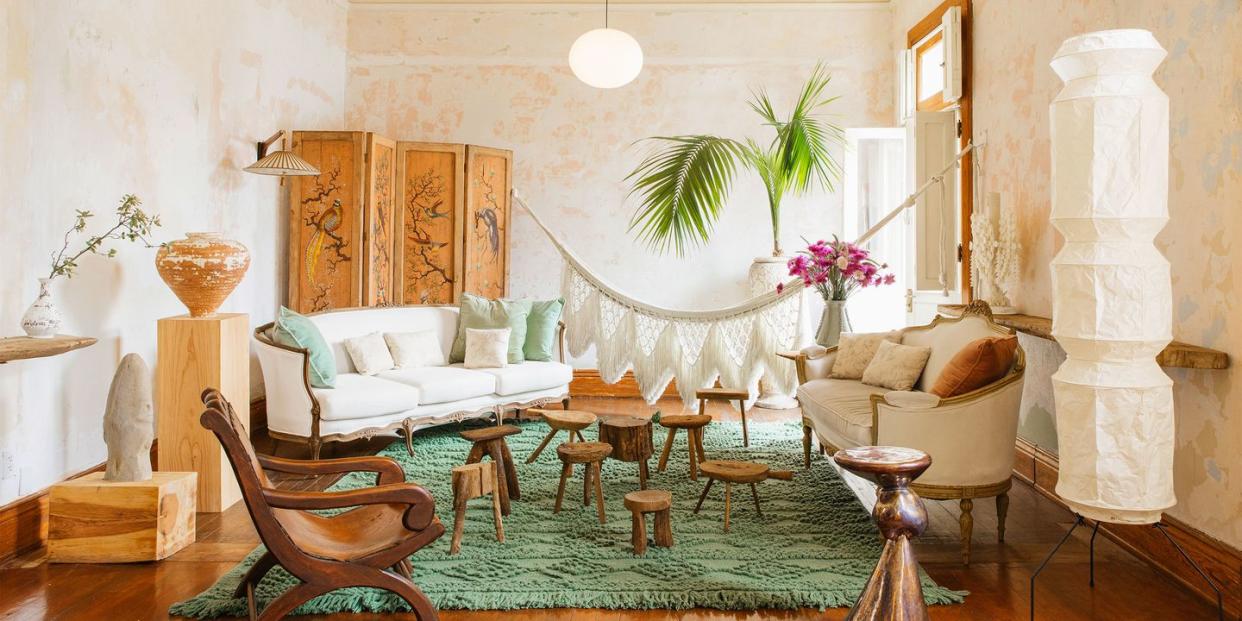
The walls of Elena Reygadas’s Mexico City home are tinged dusky pink and faded blue, traces left by those who have inhabited the rooms over the past century. “I’m fascinated by spaces where you can see layers of time,” says the acclaimed chef, whose apartment is in the elegant Roma Norte neighborhood. Rather than impose her own colors, she scraped away at the walls to reveal the varied tones that had covered them over the years. Now they serve as a backdrop to the vitality of a new presence.
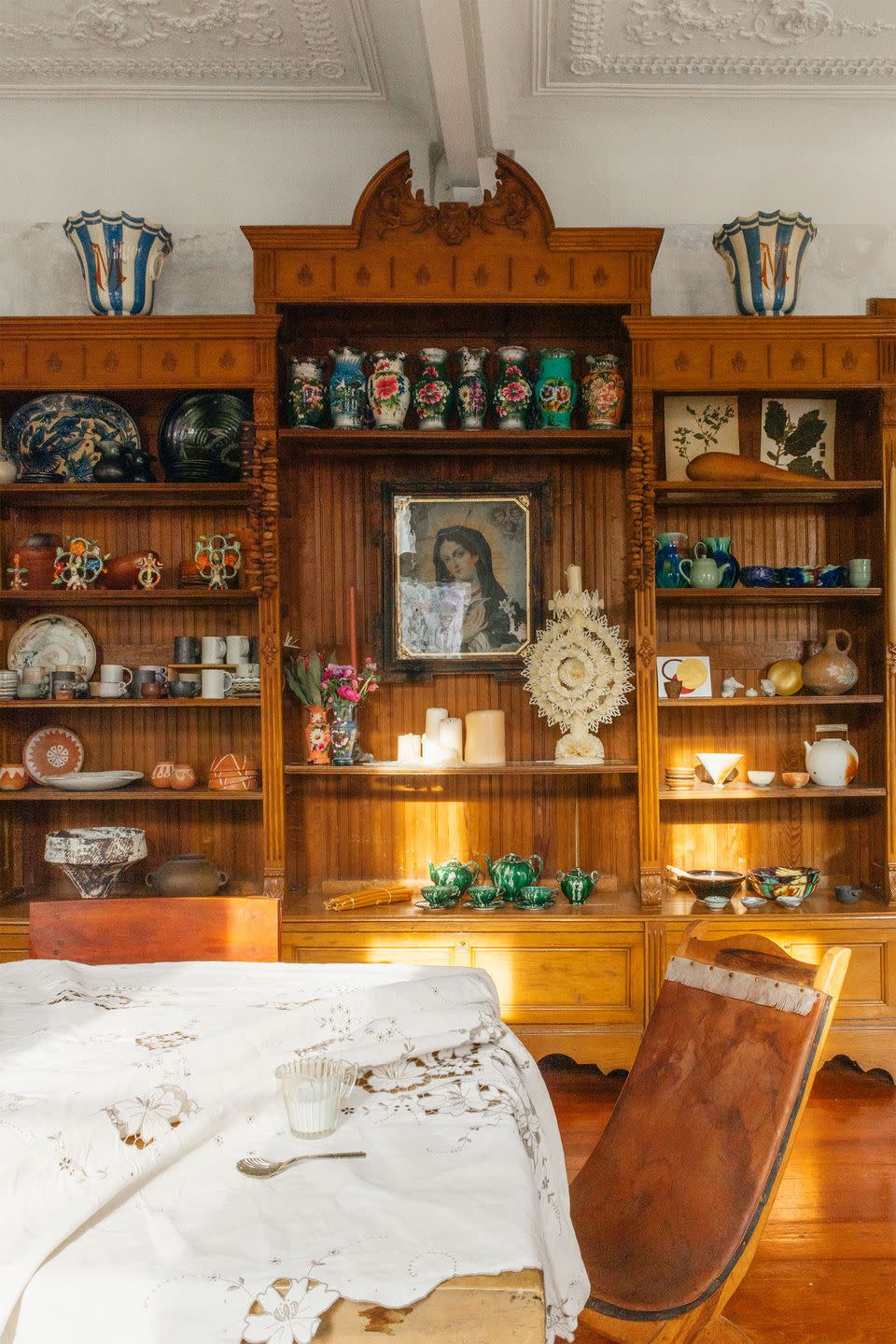
Reygadas’s delight in repurposing the past is evident throughout the home she shares with her partner, a writer, and her daughters, Lea, 15, and Julieta, 13. Flea-market finds coexist with classic designer pieces and family heirlooms, while modern ceramics and signed photographs by Manuel Álvarez Bravo and Graciela Iturbide jostle for attention with traditional Oaxacan pottery and religious images.
“Mexico is a country of infinite creativity,” Reygadas says, adding that she doesn’t distinguish between creators of fine art and traditional crafts. “We like to be surrounded by everyday and artistic objects that inspire us.” It is that enthusiasm that led her to make a collection of wooden milking stools the centerpiece of her living room.
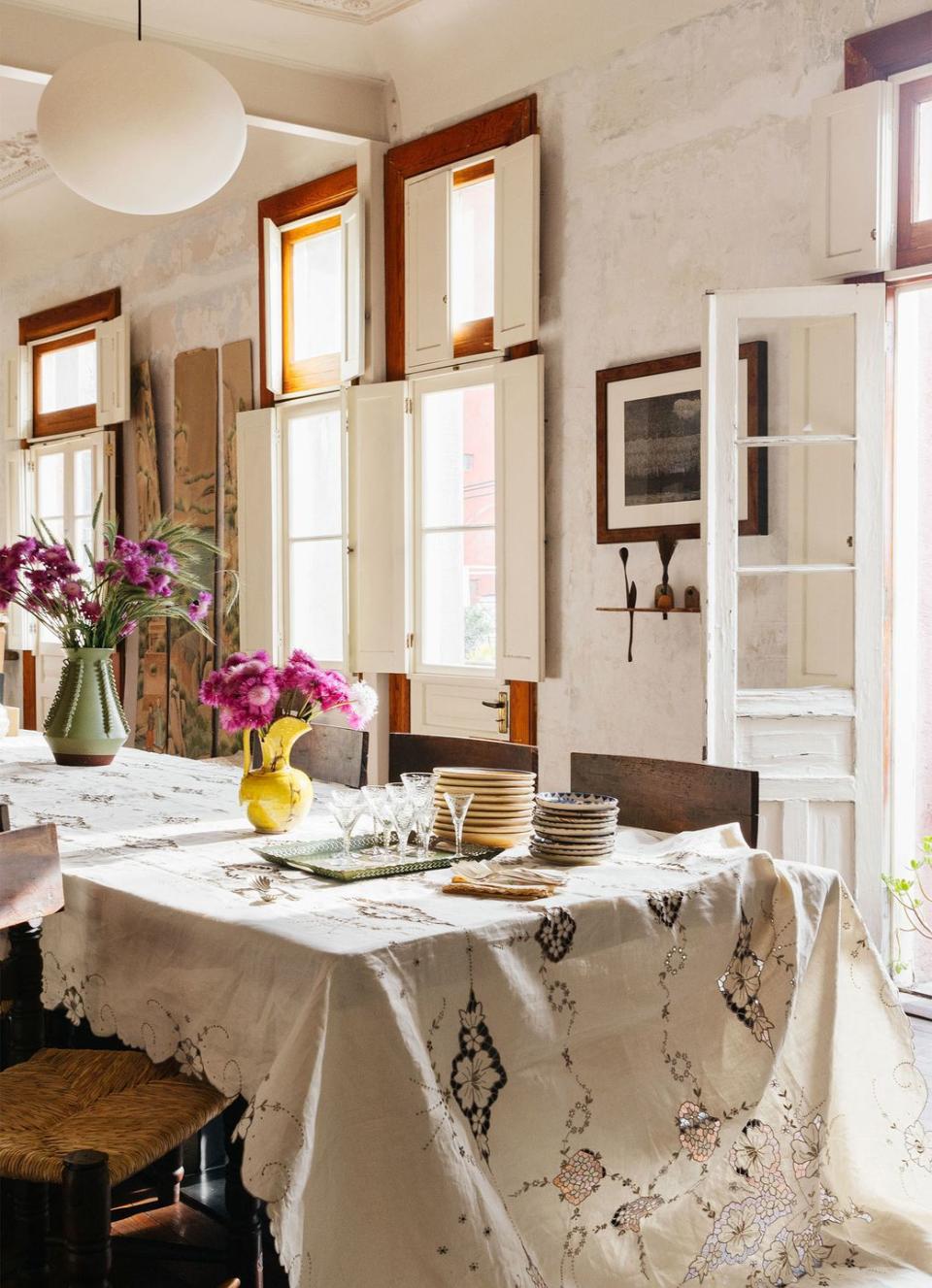
Reygadas infused that freshness into her first restaurant, Rosetta, which she opened in 2010 in a handsome mansion, also in Roma Norte. Her idiosyncratic fusion of Italian dishes and seasonal Mexican ingredients became a touchstone for the early-20th-century area, which is now a pole of the city’s gastronomy, fashion, and art scenes. Three bakeries and Lardo, a buzzy Mediterranean—themed restaurant in nearby Condesa, followed. “What matters to me most in a space is to make people feel comfortable,” she says. “I hate those icy places where you can’t chat or read a book.”
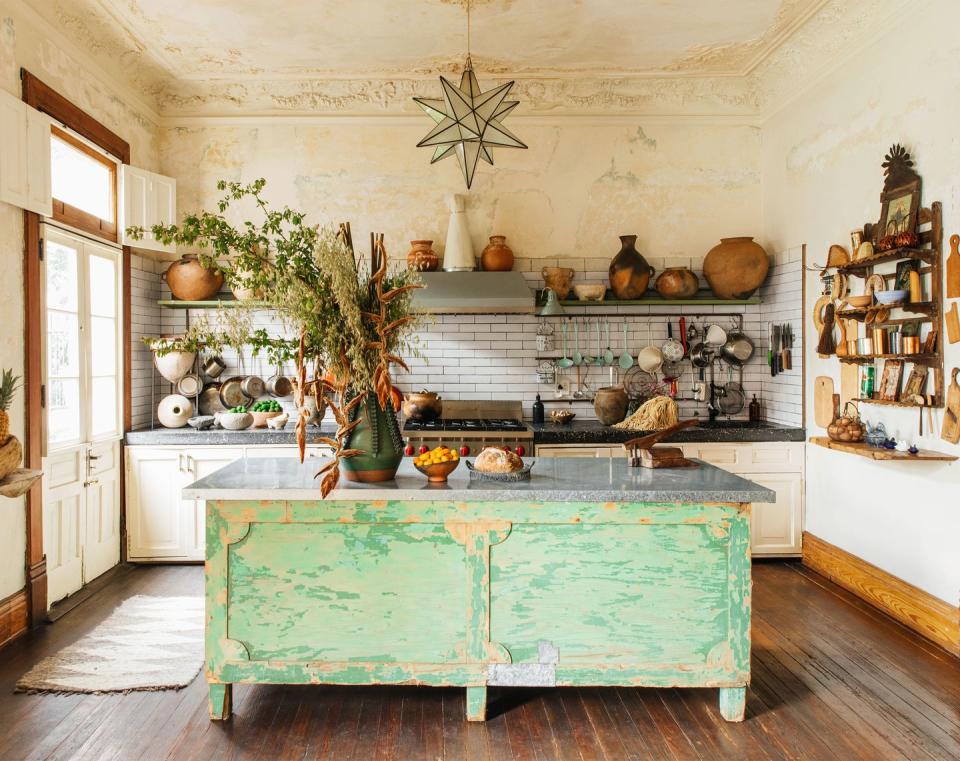
The Mexico City native began working in restaurants when a university strike halted her studies. A catering stint on the set of a movie by her filmmaker brother, Carlos, helped make up her mind. After graduating with a literature degree, she studied cooking and baking in New York, then landed in London, where she worked at the Michelin-starred Italian restaurant Locanda Locatelli.
In 2015, Reygadas bought two second-floor apartments in a Roma building and combined them, knocking out walls to open a long, sun-drenched great room. Wherever she could, she kept original features, conserving elaborate molding on the high ceilings, along with antique wooden floors and windows. Nothing was wasted; doors she no longer needed were used for cabinet fronts and closets.
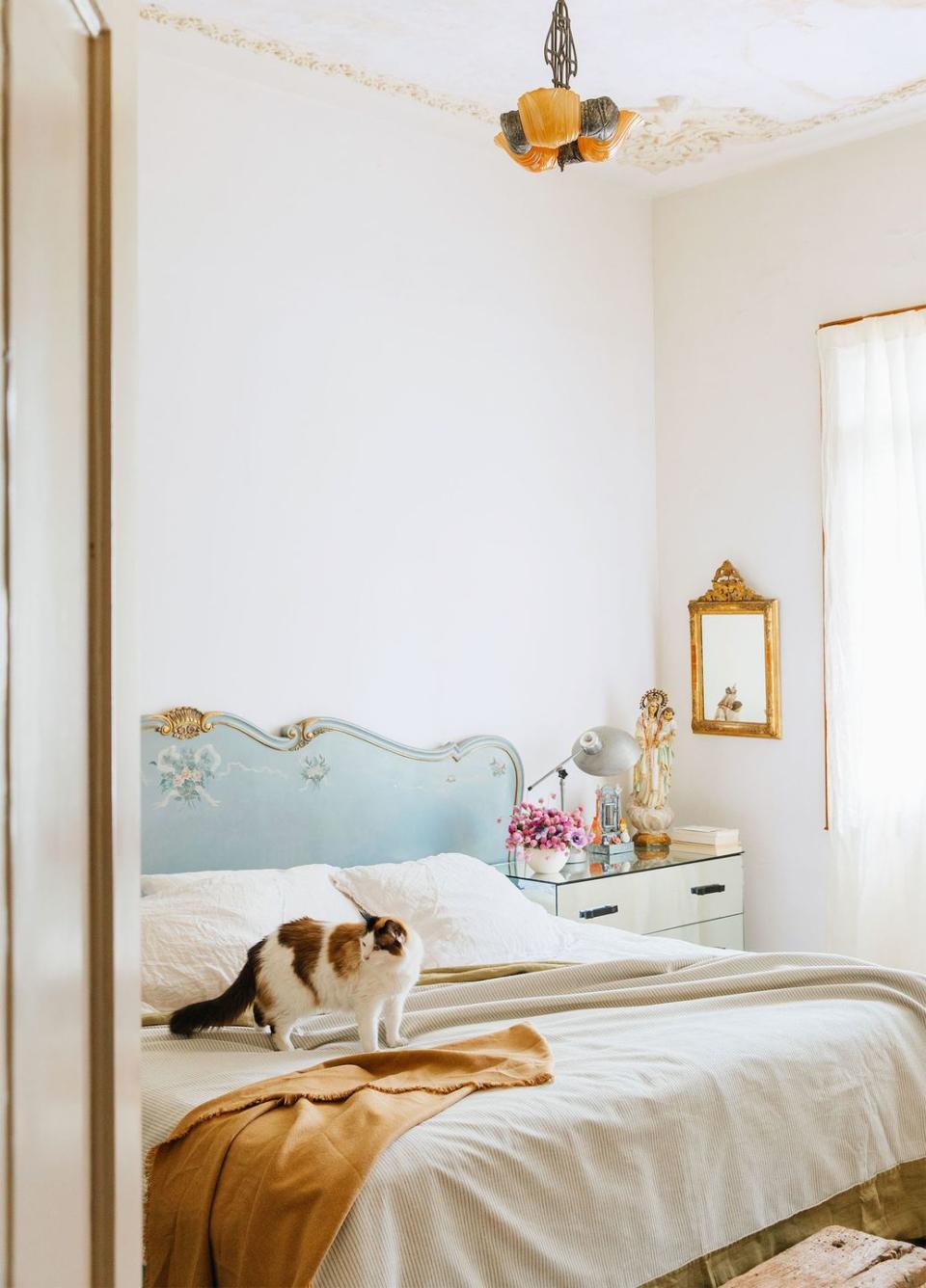
At one end of this grand space is the living area, where a fringed hammock hangs between a pair of antique sofas reupholstered in white cotton. In addition to the milking stools, there is a butaque—a traditional Mexican chair that was reimagined by numerous designers working in Mexico after the Revolution. This one is by William Spratling, an American transplant best known for the silver jewelry he designed in the town of Taxco.
Reygadas does not believe in hanging art on the walls. “I’m more interested in having objects everywhere, dancing through the house,” she says. Here, she displays everything from a bronze side table by American sculptor Alma Allen, who works in Tepotzlán, Mexico, to a pre-Hispanic phallic symbol from Mexico’s Gulf Coast.
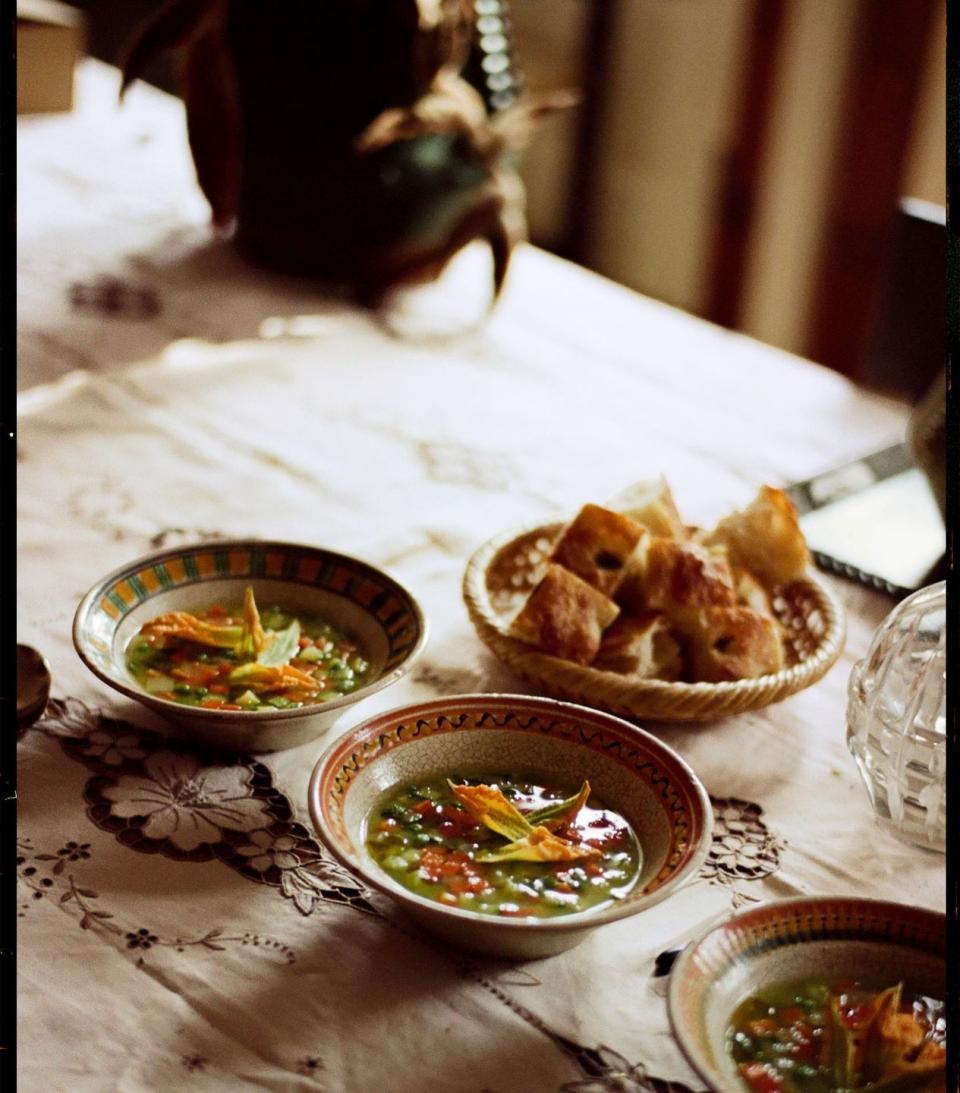
At the opposite end is the kitchen, where a weathered green piece from a carpenter’s shop is topped with zinc for an island. Nearby is the dining area, where a long table in a Mexican hardwood called parota is draped with her paternal grandmother’s lace tablecloth for special occasions. An inveterate collector of tableware, Reygadas displays her finds in a large vintage case from an old fabric store. Arranged around a painting of the Virgin Mary, the shelves hold such treasures as ceramics by Mexico City artisan Perla Valtierra, vintage Oaxa-can barro chorreado glazed pottery, Korean porcelain pieces, and a decorative candle by Ramón Ramírez López, whose family has been producing wax candles for five generations.
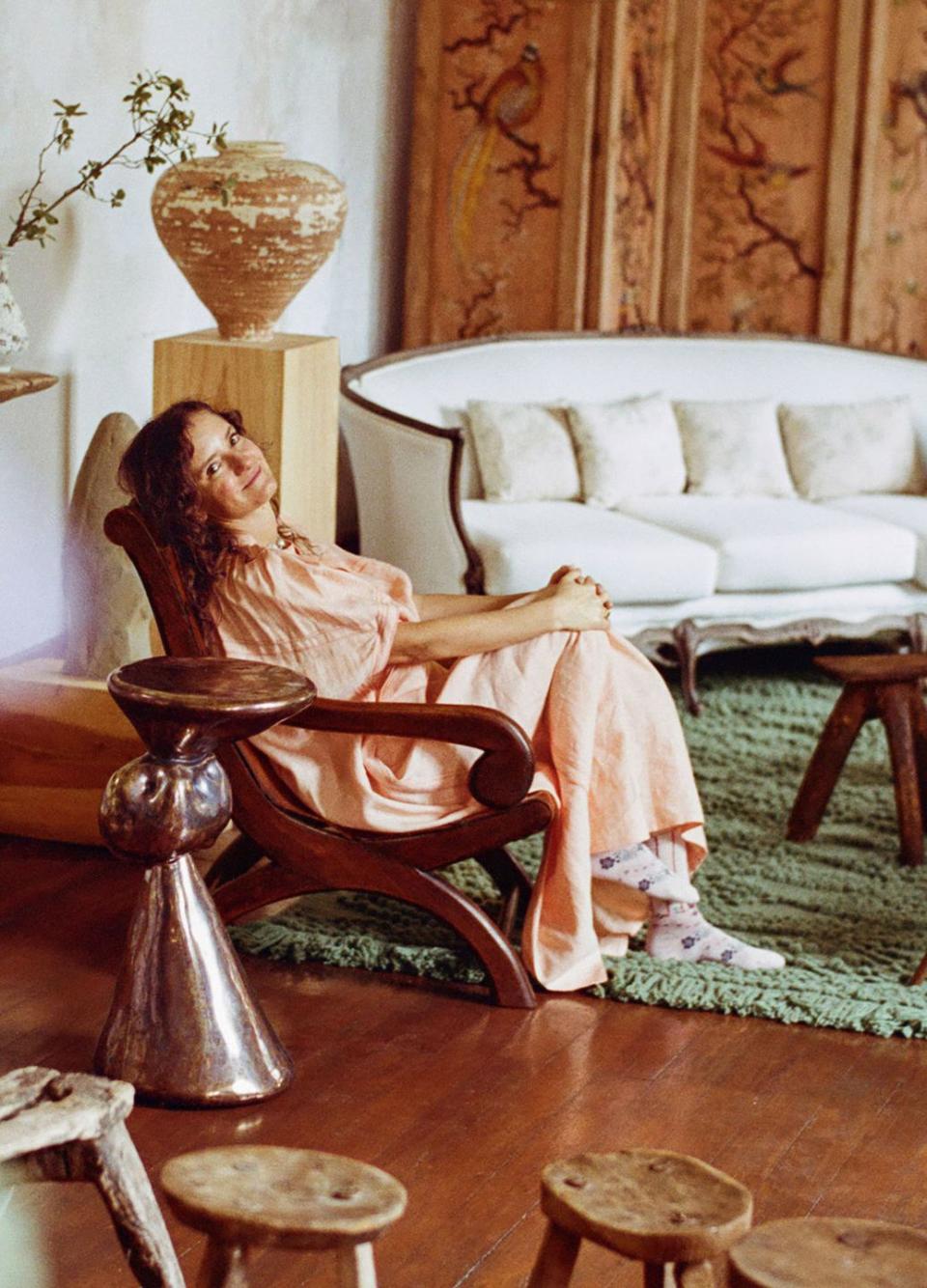
Other spaces in the apartment are furnished simply, as in the primary bedroom, where her maternal grandmother’s blue-painted bed takes center stage. When Reygadas needs quiet for reading and writing, she heads to her book-crammed studio on the roof, where the floor-to-ceiling windows overlook a plant-filled terrace. Back downstairs, the apartment is often busy with her daughters and their friends, the table piled with food and beloved cups filled with tea. Which is as she believes it should be. “This is a family home,” Reygadas observes. “A living home.”
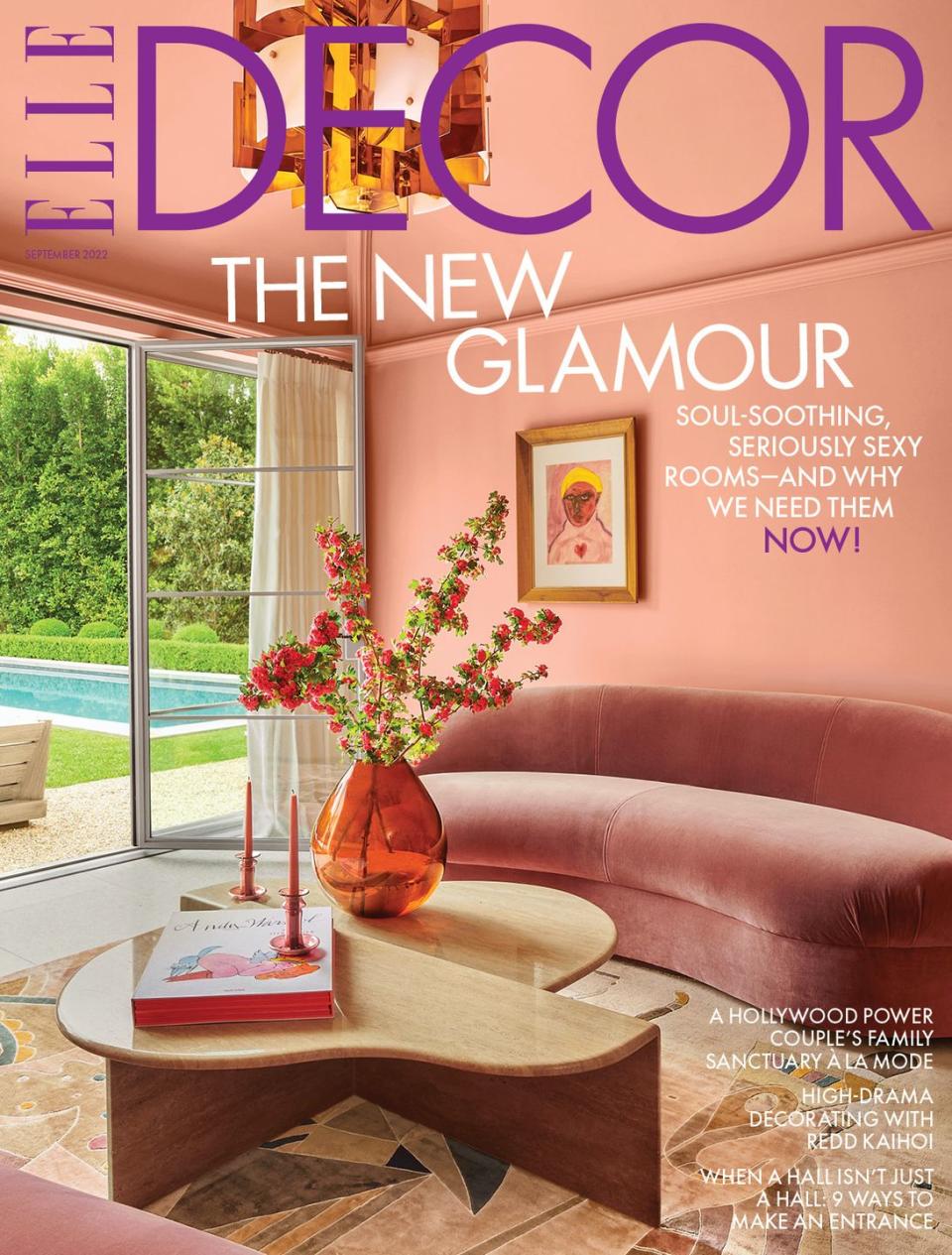
This story originally appeared in the September 2022 issue of ELLE DECOR. SUBSCRIBE
You Might Also Like

